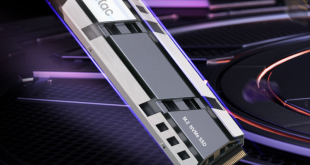After plugging in the RT-AC66U and powering it up we then entered the IP address of the router and we were met with the ‘Quick Internet Setup' pages.
The first thing it wanted set-up was the admin log-in and password.
We were then guided through setting up the wireless settings for both the 2.4 GHz and 5.0 GHz transmitters.
Finally we were able to press finish and connect to our router wirelessly.
We were then forwarded to the User Interface for the ASUS RT-AC66U. Our first impressions were that it was laid out quite logically but did contain a lot of options. The first page of the User Interface is the network map.
The second page allows you to set-up up to 3 guest networks per wireless band (6 in total).
The third page is titled ‘Traffic Manager' and allows you to enable the QoS setting.
There are also options for Parental Controls and a vast array of USB applications.
ASUS are also promoting their AiCloud service which is the combination of an NAS device and a cloud service.
We then moved to the advanced settings pages where we were able to adjust a vast array of Wireless and LAN settings.
Further to this there are options for WAN and IPV6 settings, including setting up a DMZ and DDNS.
There are also VPN and Firewall options for you to adjust.
Finally the last page allows you to change the mode of the router allowing it to also work as a Media Bridge or Access Point.
 KitGuru KitGuru.net – Tech News | Hardware News | Hardware Reviews | IOS | Mobile | Gaming | Graphics Cards
KitGuru KitGuru.net – Tech News | Hardware News | Hardware Reviews | IOS | Mobile | Gaming | Graphics Cards




















thats great, but id only buy this for laptops, and id need a ton of those USB dongles which make the laptop very bulky IMO.
“Can’t get full speed out of the device with current technology.”
I don’t see how this is a Con? You say it’s future proofed as a pro, then say it’s a con at the same time? I’d rather it be ahead of the game so I don’t have to be buying new routers when faster tech comes out.
I understand the point – its very fast, but its hard to get full speeds. None of my laptops can handle this speed, due to the current technology. so its good to look ahead but right now you are limited.
Good review actually, im buying one as I might pick up a few of those USB netgear dongles too.
Kitguru is an excellent website but the author of this article seems to have some difficulty with consistent units of measurement. There is quite a difference between MB/s (megabytes per second) and Mb/s or Mbps (megabits per second). 450 MB/s is about 3600 Mbps (SSD data transfer speeds) and is unlikely to be seen on a current wireless router.
Hi Idawari, That was actually my fault as I meant to edit the 2 or 3 ‘MB/s’ errors to the correct naming.